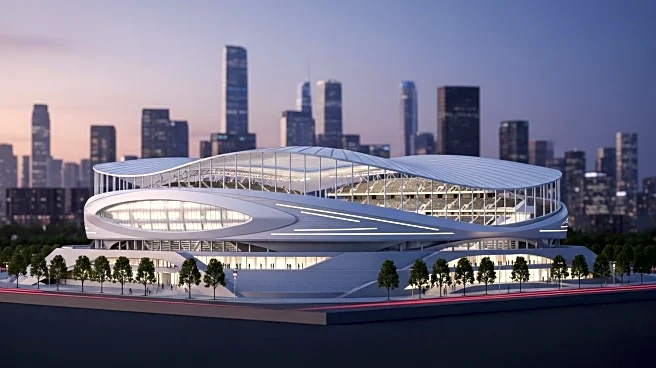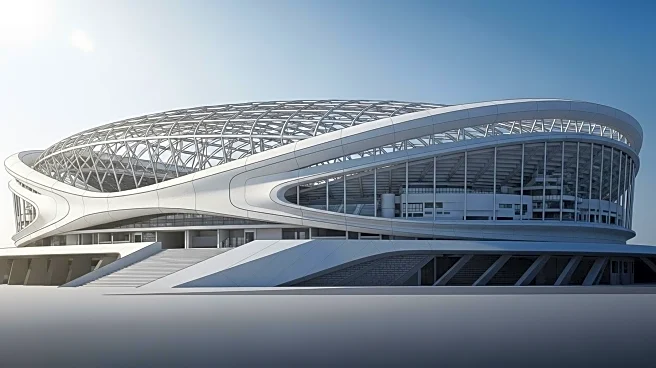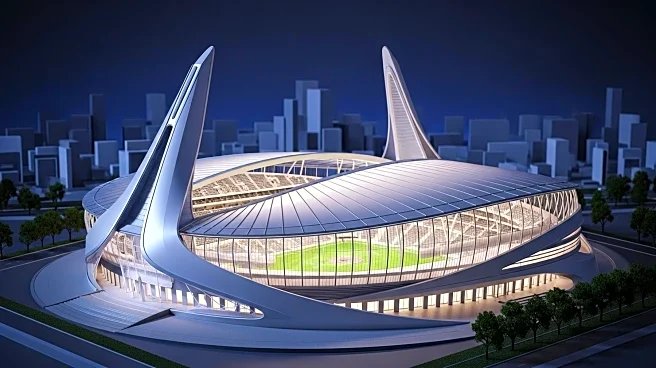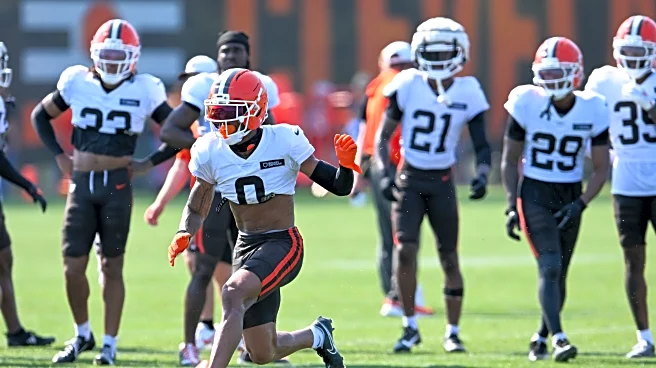What is the story about?
What's Happening?
The Cleveland Browns have selected a joint venture between AECOM Hunt and Turner Construction to manage the construction of their new $2.4 billion stadium, New Huntington Bank Field, in Brook Park, Ohio. The project, funded by $1.2 billion in private investment and $600 million each from state and local sources, will feature a 67,500-seat enclosed stadium with a translucent roof. Designed by HKS, the stadium will offer the capability to expand to 75,000 seats for large events such as international soccer matches and concerts. The construction is set to begin this month, with groundbreaking scheduled for early 2026, and the stadium is expected to open in 2029.
Why It's Important?
This development is significant as it represents a major investment in sports infrastructure, potentially boosting local economic activity through job creation and increased tourism. The project is expected to create over 6,000 construction jobs, providing a substantial economic boost to the region. Additionally, the involvement of local firms like Independence Construction and Independence Excavating highlights a commitment to community engagement and local economic development. The new stadium will also enhance the Browns' ability to host a variety of events, potentially increasing revenue streams and elevating the team's profile.
What's Next?
As construction begins, stakeholders will likely focus on meeting diversity and inclusion goals, as seen in previous projects. The Browns and their partners may face scrutiny to ensure local and minority-owned businesses are adequately represented. The project's progress will be closely monitored by local government and community groups, with potential adjustments to plans based on feedback and evolving economic conditions. The successful completion of the stadium could set a precedent for future sports infrastructure projects in the region.
Beyond the Headlines
The project underscores a broader trend in sports infrastructure towards multi-use facilities that can host a variety of events beyond traditional sports games. This approach maximizes the utility and revenue potential of such investments. The innovative design, particularly the translucent roof without a truss, may influence future stadium designs, emphasizing aesthetics and fan experience. The project also reflects a growing emphasis on sustainability and community involvement in large-scale construction projects.
AI Generated Content
Do you find this article useful?















